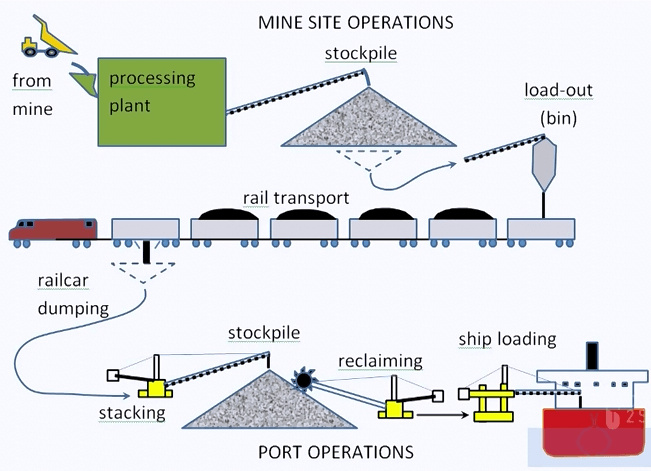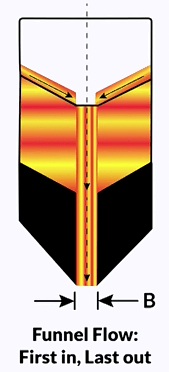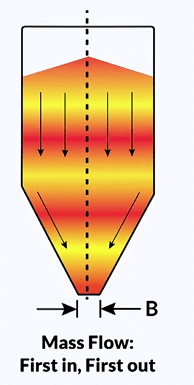After beneficiation we now need to focus on the storage handling, and transport of the mined product which can be ore or coal to get it to the customer. As the products of mining are mostly grain able materials that are handled by disciplined known as bulk materials handling, which is the specialty of the discipline of mechanical engineering. In most cases, only a small proportion of the mined product can be sold to local customers which makes it necessary to use appropriate methods of handling and transportation to take the product to an export facility which maybe a long way away. Usually before the ore leave on a ship, it has been through multiple handling processes. After processing the ore is blended and stack on stock piles before it is dispatched of site using conveyors rail to rail transport. Belt conveyors are typical means to transport bulk materials over shorter distances or road rail transport are the preferred for long distances.
Once the product arrives at the port facilities it is discharged and stacked on stockpiles gangue before it is finally loaded onto belt carriers to be exported overseas.

The procedures with the design of a storage and handling plant and equipment are mostly well established, and they follow our basic steps; determination of bulk material characteristics such as float properties and bulk strength, determination of the handling and storage equipment geometry to ensure the desired capacity and flow patents with acceptable characteristics for reliable and predictable discharge, load estimation on storage structures like bin and hopper rolls, as well as on the feeders and the shoots under operating conditions. Design and detail in the handling plant including the structure and machinery.
The characterization of the bulk material properties involves the determination of the strength and flow properties of the bulk solids under operating conditions. These include; conditions during loading and consolidation during storage. They must take account of environmental factors such as temperature and humidity. Laboratory tests are usually performed to measure physical properties including: Shear strength, yield strength, flow properties, internal and wall friction angle, and bulk density of bulk material. Different types of storage systems are used to accommodate the ore at different stages on its way to the customer. The most common of these are: stock piles and storage bins and silo. Whenever large quantities of ores are to be accommodated, stock piles are the most spaced and cost efficient option.
Stock piles can be formed by dumping into piles from trucks ad pushing it to hips by dozers or by delivery unto a pile from a conveyor boom. A more controlled method to operate stock pile is the chief by the use of stackers and recliners. Alternative storage options, or smaller quantities are bins and silos. These are rectangular or seemingly upright structures with a tape and hopper at the bottom to facilitate discharge of materials to trucks, conveyors or entrain in the picture while widens.
There two major modes of flow recognize in material that are moving through a hopper, these are known as mas-flow and funnel flow. In mas flow the whole bulk material is in motion at every point within the bin during discharge. With mas flow the first ore in is the first ore to be discharged. Mas flow requires steep smooth hopper surfaces, with narrow broth transitions. If the hopper wall inclination is too low and all the surface roughness is too high, funnel flow will occur. This flow patent is the first in last out principle with the top surface fading to the centre and folding to a vertical flow channel that forms above the opening. Bulk material handling systems or the handling of granular products are mostly made up of stationery equipment including conveyor belts, stackers, recliners, tracks and roll car dumpers, and ship loaders. This is usually combined with storage facilities such as stock yards, stock piles and storage silos.
At the interface between storage and transport systems, mas transport systems such as transfer sheets and feeders are used. The function of a feeder is to control the meter the gravity flow of bulk solids from bin to stock piles. Maintaining direction at the correct speed or different flow rates while minimizing impact forces and wear. Transfer sheets are used in conjunction with feeders to direct and discharge material flow onto a receiving conveyor or to redirect the flow from one conveyor to the next. Belt conveyor are the most widespread continuous transportation system in bulk material handling operations. Every bulk materials behave in a different way, and its properties depend upon a multitude of parameters. It’s important to get the handling and transport equipment in a mining situation right. Inefficient or ineffective handling equipment can have significant cost implications for a mining operation.
